12 Types of Lupine to Add Grace & Beauty to Your Garden
Author: Jen Worst | Editor: Omar Alonso
Review & Research: Jen Worst & Chris Miller

If you want to add a touch of brilliance, grace, beauty, and color to your landscape, consider looking at some of the finest types of lupine flowering plants - a group of native North American wildflowers.
Lupines are one of the most popular garden plants since they are one of the easiest to grow. These flowers bloom n slender conical spikes above the foliage throughout the summer; purple is the most common hue, but white, pink, yellow, magenta, blue, and other tints are also common.
They are divided into two groups-those that thrive in arid environments in the west and those that thrive in humid climates in the east. The types grown in gardens are mostly hybrid crosses of native species selected for bloom color and strength.
Below let us guide you in learning about the types of lupines that add beauty everywhere.
12 Types of Lupine
The pea family contains roughly 200 species of herbaceous and partially woody plants. The hills, creeks, and streams brighten up with scores of lupine flowers from south to Utah and California, western North America, western Wyoming, and southern Alaska. Here are a few of the more well-known types of lupine.
Wild Lupine
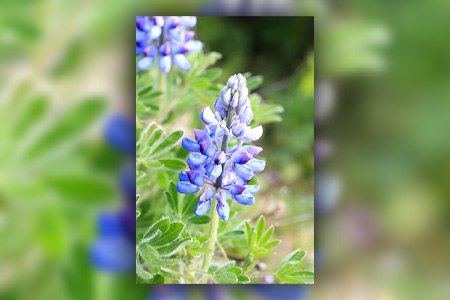
Also known as Lupinus perennis and Sundial Lupine gets its name because its leaves follow the sun. Wild Lupine is a long-lived cool-season flower that produces bluish-purple, blue blooms, white and pink.
In addition, this variety of lupines is well-known for having long, spectacular nodes of purple flowers in the shape of a pea. These kinds of lupine look fantastic, in my opinion, matched with various types of violets.
It can be found in dry open woodlands around the eastern United States, including Texas, Maine, Florida, Canada, Minnesota, and the Arctic Ocean's shores. This plant's natural habitat is sandy regions like savannas and dunes.
European Yellow Lupine
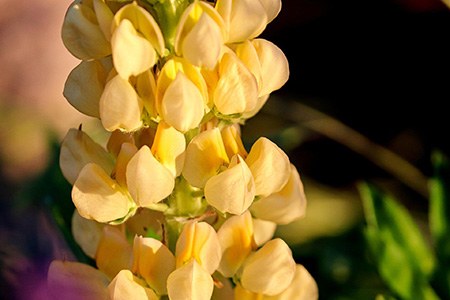
Yellow Lupine and Annual-Yellow Lupine are two more popular names for this lupine flower. These lupine types are grown worldwide for their seeds, which are used as feed and food and for forage.
Also, Yellow Lupine seeds are mostly utilized as livestock and poultry feed since they provide a good quality protein substitute to soybean in all animal species.
Lupinus luteus has a thick taproot and a densely hairy stalk. Lupins also help agricultural systems to be more sustainable. Given that it is a wild plant, some of its most typical habitats include volcanic soils and warm sandy places. Landfilling can also be done with yellow Lupine.
Silver Lupine
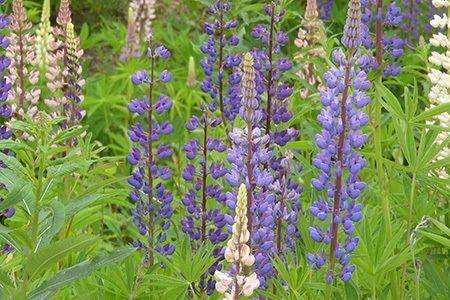
Lupinus Albi frons (Silver Lupine) is a fast-growing, evergreen herbaceous perennial with silvery leaves, a feathery texture, and gorgeous blue to magenta pea-shaped flowers. It thrives in sandy or rocky, dry, well-drained soils in full sun. It will withstand some water but prefers to stay dry.
The blooming season is from early spring through early summer. These types of lupine have a pleasant odor, and because they grow in so many different places and environments, they blend in well with a wide range of plant and flower species.
In most gardens and backyards, its delicious aroma attracts a lot of bees and butterflies. However, the problem with growing this annual shrub is the bitter-tasting alkaloid toxin inherent in its leaves is highly toxic to cattle due to the lupin alkaloids in the leaves and seeds; thereby, it needs to be looked over when planted.
Yellow Bush Lupine
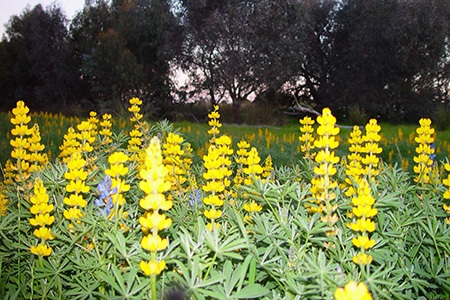
Lupinus arborous, often known as the yellow bush lupine or tree lupin, is a fast-growing moderate-sized perennial shrub with palmate grey-green leaves of lobes silky-hairy underside, and sweetly fragrant yellow flowers in upright racemes to 30 cm in length.
In full sun and sandy, well-drained soils, the Yellow Bush Lupine thrives. Although it tolerates moderate shade, the full sun produces the greatest flowers. Little to no water is required. After these lupine plant varieties have been established, water it no more than twice a month in the summer.
Because of its nectar-rich blossoms, it is also a well-known plant species for attracting bees, butterflies, moths, and other pollinators. Tree Lupine tends to grow on cliffs, dunes, and slopes and is native to coastal parts of western North America, including British Columbia, California, Oregon, and Washington.
Miniature Lupine
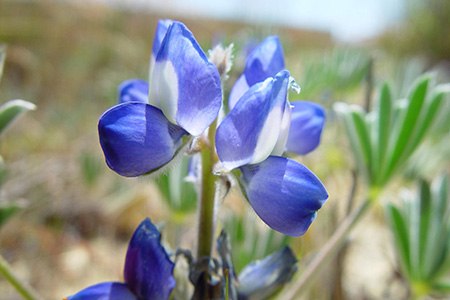
Lupinus bicolor, this perennial plant, also known as miniature lupine, pigmy-leaved lupine, and Lindley's Annual Lupine, is native to western North America. These lupine varieties thrive in full sun in dry, sandy, well-drained soils.
The name 'miniature lupine' is a clear allusion to the plant's small stature. The flowers of this plant come in two gorgeous colors, according to one of its common names, 'lupine bicolor.'
One is a beautiful blue, while the other is usually a blend of white and magenta or light purple. Because of its ability to fix nitrogen, miniature Lupine can thrive in low-fertility soils. By shape and color, these miniature lupine look amazing planted among various types of lavender.
Miniature Lupine is commonly planted and cultivated as an ornamental plant because of its beautiful colors. One of the reasons the plant attracts pollinators like bumblebees, hummingbirds, and butterflies is its beauty and attractiveness.
Texas Bluebonnet Lupine
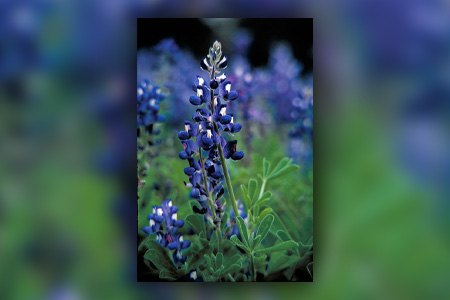
Lupinus texensis, the Texas bluebonnet or Texas lupine, is a native of Texas. These types of lupine are low-growing perennial with elongated clusters of up to 50 scented pea-like deep flowers, bright blue at the bottom and bright white at the top.
Bluebonnets, despite their name, come in a variety of colors, including white, pink, and purple. Bluebonnets can't grow in clay-based soils that aren't well-drained. They require full sun and prefer an inclined position in light to gravelly, well-drained soil.
As a result, the plant takes very little water and does not require fertilizing. That means it's drought resilient and can withstand long periods of drought.
The Bluebonnet is one of five Bluebonnets designated as the state flower of Texas. Flowers are packed tightly on a spike with a distinctive ice white terminal tip. If swallowed, plants, particularly seeds, can be hazardous to humans and animals.
Large-Leaved Lupine
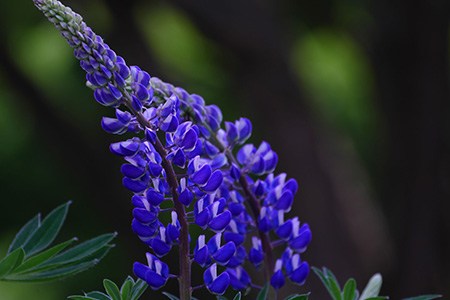
Lupinus polyphyllus, also known as the large-leaved Lupine, is the queen of the lupine family, with characteristic purplish-blue flower spires that may reach over one foot in length. One of the tallest and most luxuriant western species, this Lupine is slightly succulent.
Beautiful horticultural hybrids have been created by crossing it with other lupines, notably Tree Lupine. Hummingbirds, adult butterflies, bumblebees, and other insect pollinators are attracted to the plant, which provides nectar.
These lupine plant varieties are widely planted in gardens for their ornamental value, often along types of irises, and it is also produced as cattle feed in some locations; also grown to boost soil fertility as it is a nitrogen-fixing plant.
Tarwi Lupine
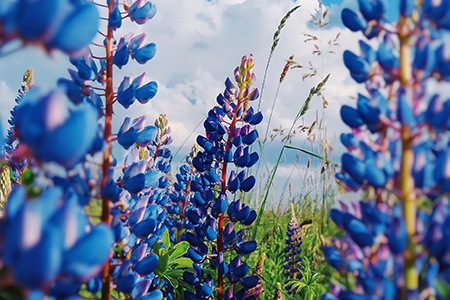
Lupinus mutabilis (Tarwi) is a lupine species primarily farmed in the Andes for its edible bean, which is utilized mainly as a protein source in human and animal nutrition. Its nutrient-dense seeds can also be used to make cooking oil.
Apart from being toxic in the human diet, lupine alkaloids may have medical benefits due to their immunosuppressive, antiarrhythmic, and hypocholesterolemic properties.
These types of lupine bloom from June to August, and the seeds ripen from August to September. It can fix nitrogen. Lupines can be found in various items, including cakes, snacks, hamburgers, biscuits, baby foods, soups, salads, milk, meat, and soya bean substitutes.
White Lupine
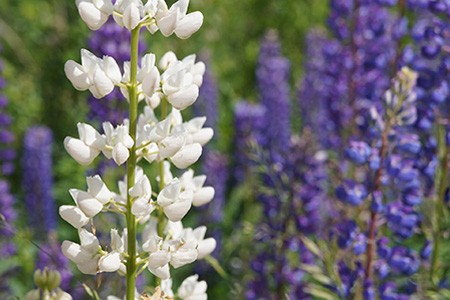
Lupinus albus, often known as the white lupine or field lupine, is a pubescent plant that grows in large numbers in meadows, grassy slopes, pastures, and sandy soils. The White Lupine prefers light acidic soil.
The seeds of this plant have a wide range of uses and advantages, and most people prepare them in the same way they prepare cooked beans. However, they are typically used in savory and veggie meals because of their high protein level.
Furthermore, the seeds of White Lupine varieties are also prized for their therapeutic characteristics, and they're used to cure a variety of skin problems like boils and ulcers.
Arroyo Lupine
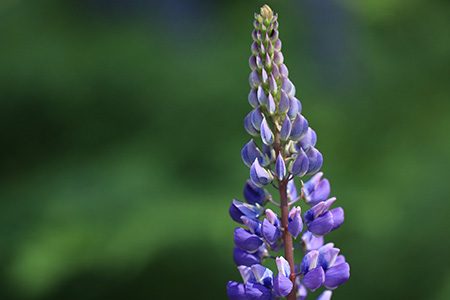
This is another common lupine flower that also goes by the names succulent lupine and hollow leaf lupine and is the welcome sign of spring on the rocky slopes and grasslands of the Western United States.
The amount of moisture and fertility in the soil where these types of lupine grow significantly impacts their height. This plant needs heavy, moist, clayey soil and full sun to thrive.
Arroyo lupines are commonly utilized in natural landscaping projects, where they are planted as a decorative plants for use in wildlife gardens, flower borders, and garden banks. In addition, many people cultivate this plant in pots and containers in their gardens.
Arctic Lupine
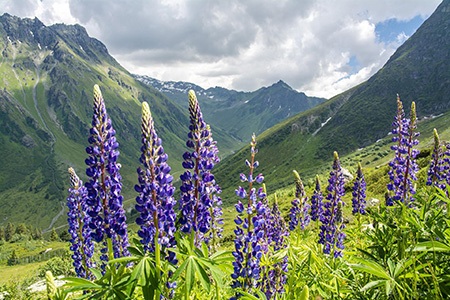
The Artic Lupine has your expected upright standing stems but they're covered in long, silky white hairs, for lack of a better term. Sometimes you'll see them called Subalpine Lupine, especially in the regions of northwest North America.
They'll grow upwards between an average of 6 and 20 inches in height and it's perennial so you can enjoy it over and over again. The green leaves are similar to palm leaves in shape and have a fuzzy bottom to them while maintaining a smooth surface on top.
The flowers themselves can range between a lavender purple to a blue shade. They're native to and adapted to colder climates with moist soils, so keep that in mind if you attempt to grow these lupine types. They do best with low levels of nitrogen in their substrate soil.
Riverbank Lupine
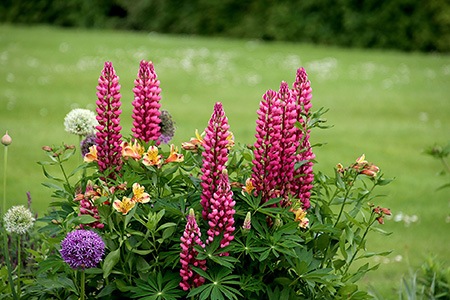
This perennial herb grows in coastal areas in western North America and goes by other names such as stream lupine, streambank lupine, and nine fingers lupine. It's classified as a subshrub due to its wood-like base that causes it to grow to an average height of around 2 feet, give or take a foot.
It's light purple flowers grow in swirls starting in mid-spring. They grow atop the stem which is hollow yet thick and has a red hue to it. The leaves tend to contain 5 to 9 leaflets that are each about 3 centimeters long. They appreciate partial shade and can manage full sun as long as the soil is moist.
This lupine species is used to help with erosion control due to how fast they can grow and double as ornamental flowers thanks to their beautiful appearance. They're also used in reforestation attempts since they can help enrich the soil's nitrogen levels.
Other Types of Lupine Varieties
There are more lupine plant varieties out there, of course, that you may want to explore if the above batch don't suit your tastes or you're just a really big fan. These include:
- Lavender Spires Lupine
- Bigleaf Lupine
- Gallery Blue Lupine
- Texas Bluebonnet Lupine
- Big Bend Bluebonnet Lupine
- Desert Sun Lupine
- Pink Fairy Lupine
- King Canute Lupine
- Salmon Sultan Lupine
- Blue Javelin Lupine
- Snow Queen Lupine
- Snow Pixie Lupine
- Cashmere Cream Lupine
- Dumpty Lupine
- Terracotta Lupine
- Gladiator Lupine
- Magic Lantern Lupine
These either may be hard to get a hold of because they're not widely shared or are private cultivars. They may also have relatively restricted growing conditions that make them less enjoyable for the common person.
Since you're a fan of lupines, you'll love to learn about the recent 1982 myth or fairy tale surrounding the Lupine Lady and how she spread lupine seeds along the Maine coast. It's actually based on a real person named Hilda Edwards.
Types of Lupine to Bring Color to Your Flower Bed
Lupine's tall, slender color spires make excellent cut flowers for a tabletop bouquet. Although lupines are short-lived wildflowers, their beautiful colors and numerous advantages, make them a fantastic choice for garden planting.
So there you have it, the most popular types of lupine species. If you want a happy, alive presence in the garden, try planting always pointing skyward lupine flowers.



